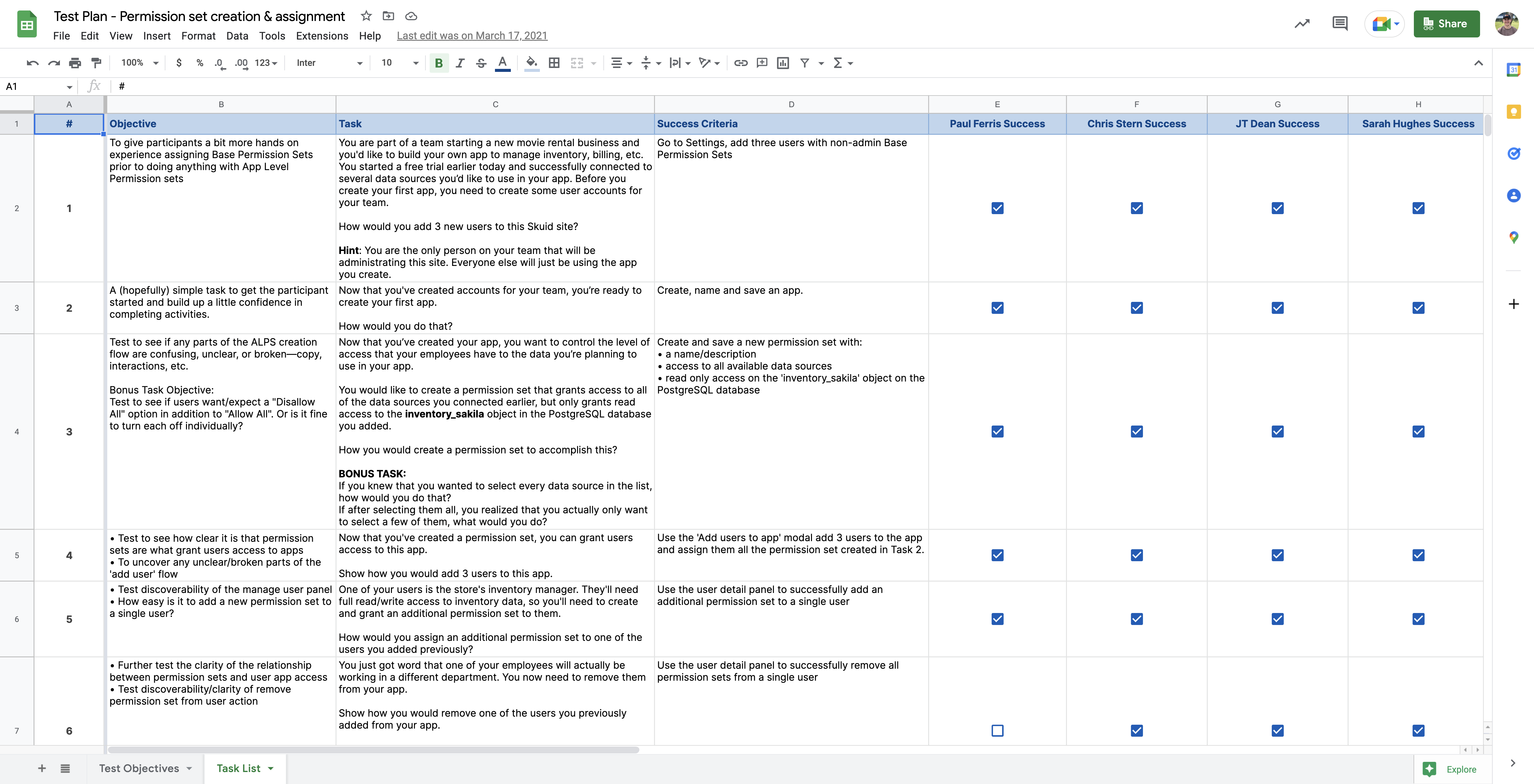I’m a firm believer in
Jakob’s Law, so I spent a lot of time building out sample apps and schema in similar products with similar user personas, like
Airtable,
Bubble and
Salesforce, trying to identify common design patterns. I found that almost every other product used the familiar design pattern of a spreadsheet to communicate the way that database tables––or objects, or entities––are structured. Additionally, many SQL field types that non-database folk may not recognize, like ‘float’ and ‘double’, were renamed with more user-friendly labels like ‘number’. And some new, non-standard field types were created for users to account for common use cases: email, phone number, multi-select, etc.
My PM and I conducted user interviews to learn if these things that were common amongst similar products might work for our users as well. The consensus was that our users liked these patterns when they had encountered them elsewhere, and even felt empowered by them. Combined with validation of knowing that other top products in our space were using a similar approach, this gave us enough confidence to move forward with the following hypothesis:






